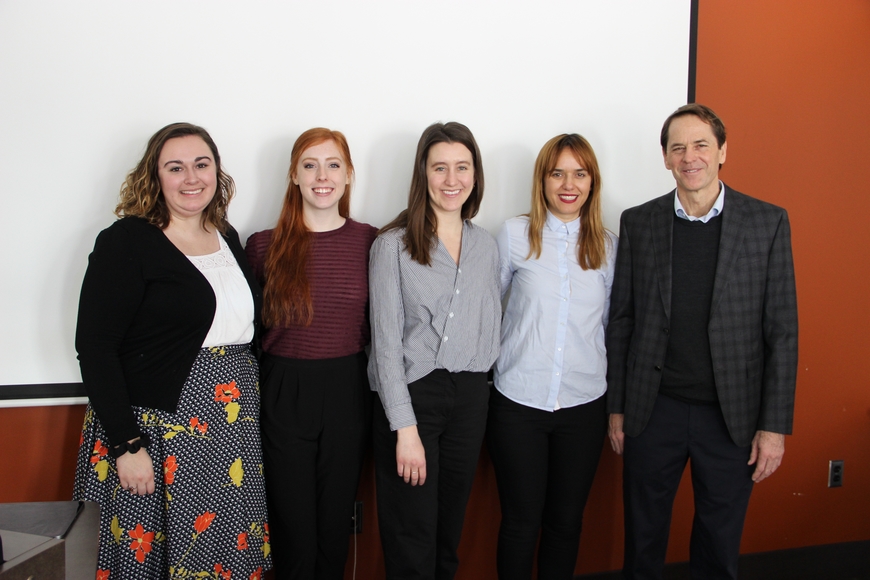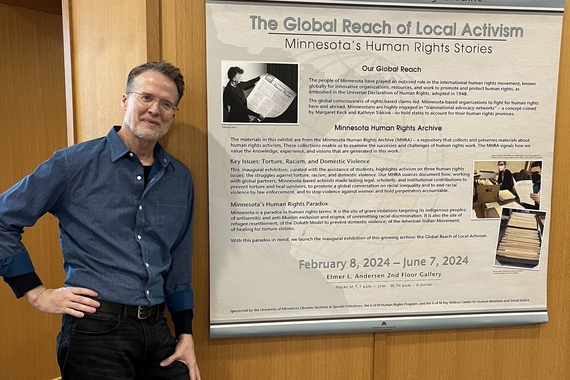The Minnesota Method for Human Rights Change
The enactment of progress in the area of human rights is complex work and success has to do with a wide variety of factors beyond the control of human rights advocates. In an effort to support defendants of human rights in the actualization of their goals, Todd Howland, who has spent the past two decades working for the UN Office for the High Commissioner of Human Rights, along with Amelia Shindelar and five UMN Masters of Human Rights graduates-Shelby Ankrom, Gonxhe Kandri, Paul Olubayo, Hannah Shireman, and Alli Strong-Martin- have published an article entitled The Minnesota Method for Human Rights Change outlining their recommendations for the effective enactment of change in the area of human rights.
The Minnesota Method for Human Rights Change was published in the international human rights journal titled El Sur late August of 2020. The essay outlines the need for a standardized practice, or guidebook, that allows human rights workers to make well-informed, collaborative decisions on their on-site work in a timely manner. Central to their argument surrounding the importance of this decision-making formula is an understanding of forces that impede and support change, as, without proper understanding of what generates, inhibits or disrupts change… we remain ill-equipped to support individuals, organisations or societies in their developmental process. Additionally, while there is a wealth of existing literature that discusses the theories behind human rights change, there are very few guides to decision-making and change enactment that can be put to practical work by people in the field.
The MN Method for Human Rights Change includes six steps which are designed to help human rights workers connect with those in the communities they are working with to identify the issues that are important to the community and which are ripe for change. The six steps that the MN Method for Human Rights Change outlines include: 1) identifying and incorporating local experts 2) undertaking a credibility risk assessment 3) assessing the status of change on human rights issues of interest 4) assessing the rate of systems change in a particular context 5) setting priorities and developing a strategy, and 6) evaluating on a regular basis the change seen with respect to those issues deemed to be of highest priority. This annual review allows for and requires flexibility from human rights workers and the local actors with whom they partner with in the field.
The MN Method emphasizes the importance of understanding the local context in which one is working and the power that connections to local experts bring to the achievement of meaningful change in the area of human rights. Also, the Method recognizes the need to focus on human rights issues that are both important to the community as well as to the credibility of the organization for which one is working. That is to say that human rights workers should prioritize those issues that are not only identified as of utmost importance by local experts but that also will lend credibility to the organization on whose behalf they are working; that, should one choose to tackle an issue whose probability of improvement is low, they risk damaging their credibility and losing the support of local actors.
In an effort to facilitate change in the area of human rights, the Minnesota Method for Human Rights Change aims to provide human rights workers with a decision-making framework that allows them to better know the context in which they are working, make meaningful connections with local actors, and prioritize their actions so as to obtain optimal results. Putting theoretical and academic knowledge to work, this team has provided the field of human rights with a manual that has the potential to improve the quality of work and change carried out by human rights workers around the world.
You can read the full article in the International Journal on Human Rights here.



